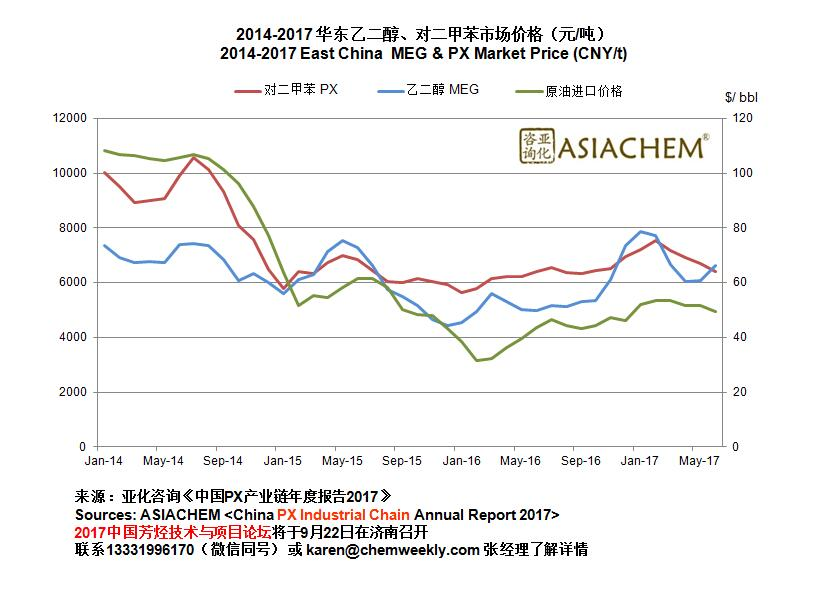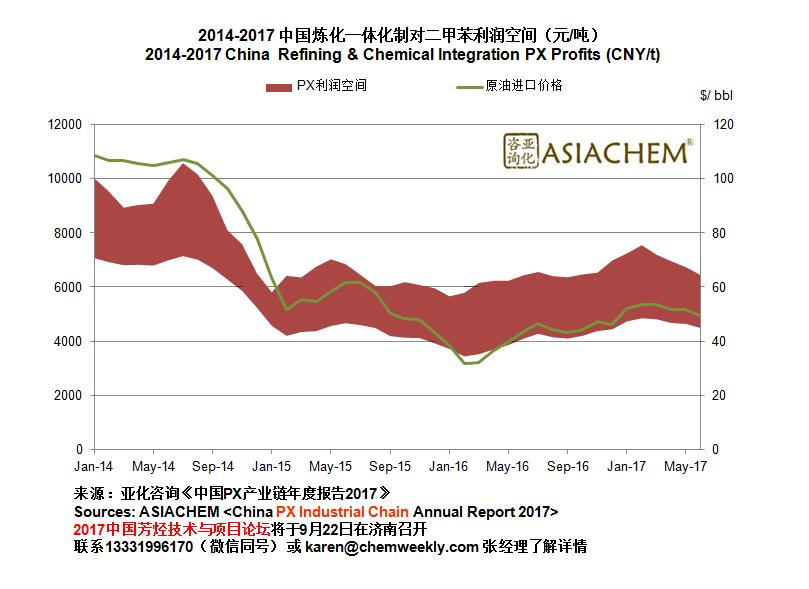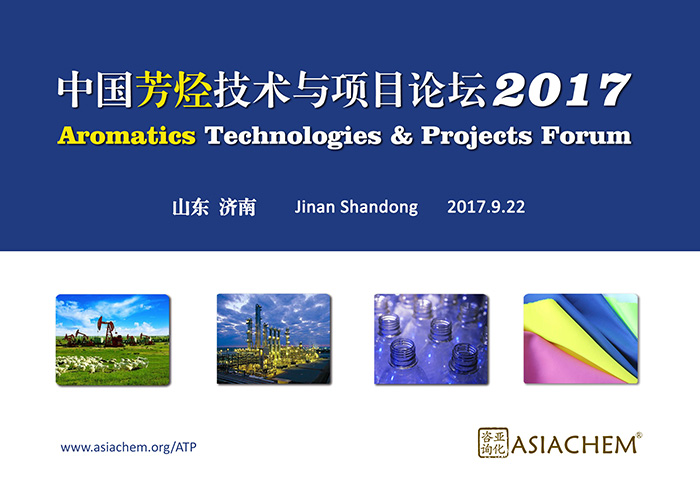ASIACHEM research shows, use imported crude oil as raw materials, 2017 the profits of refining-chemical integration to aromatics reach 2000CNY/t. As the price of chemicals compared to crude oil prices were strong, refining and petrochemical industry profitability increased significantly, business investment intentions enhanced, new technology research developed actively.
Zhongjin Petrochemical, a wholly owned subsidiary by Rongsheng Petrochemical, with PX capacity of about 1.6Mt/a, benzene production capacity of about 500kt/a. The project commissioned in 2015, after a short suspension of production adjustment, March 2016 restart, has been running smoothly. Rongsheng Petrochemical 2017 semi-annual report data show that the first half of 2017, Zhongjin Petrochemical operating revenue of 8.832 billion CNY, net profit of 751 million CNY, an increase of 10.07%, is the main source of 2017 in the first half Rongsheng Petrochemical profits of 1.103 billion CNY.
Since June 2014, international oil prices from 110 $/bbl continued to fall, has fallen to 50 $/bbl, a decline of over 50%. The decline in oil prices reduces the raw materials and energy costs of the petrochemical industry, but also makes the olefin, aromatics and other large petrochemical products prices fell significantly. Whereas the price of chemicals compared to crude oil prices were strong, refining and petrochemical industry profitability increased significantly, business investment intentions enhanced. The chart below shows 2014-2017 East China mono ethylene glycol (MEG), para-xylene (PX) and imported crude oil prices.

Based on ASIACHEM PX cost model, with imported crude oil as raw material, the profit space of refining-chemical to PX are shown as below, 2017 the profits of refining-chemical integration to aromatics reach 2000CNY/t. Public information shows that 2016-2017, use purchased naphtha as raw material to PX, profit margins of about 100dollars/t. Under this circumstance, use crude oil or naphtha as raw materials to construct large-scale petrochemical aromatics plant, has aroused the enthusiasm of many enterprises investment.

ASIACHEM research shows that there are 10 PX projects under construction or developing in China, and in 2018, China will add 8.5 Mt/a PX production capacity. By 2020, China's PX capacity will reach 34.96Mt/a, at same time, PX demand is expected to 28.5Mt/a, that means China will likely transfer from PX importing countries to exporting countries, which have a profound impact on PX supply & demand status of Asia, even the whole world.
Besides, the situation of domestic refined oil surplus drive local refinery to accelerate the transformation and upgrating, the change of product from oil to high added chemicals is the trend. PX with huge market and good profitability, has become a hot investment fileld of Shandong local refinery. Based on adequate sources of raw materials and huge reforming capacity, PX capacity potential of Shandong local refinery is expected to reach 10Mt.
The development of aromatics industry is driven by the demand, resource and technology, technology innovation can not only reduce the investment and operation costs, but also expand the sources of aromatics feedstock. SINOPEC and Shaanxi Coal have respectively developed toluene and methanol to PX technologies; Yangzi Petrochemical has built and commissioned a 200kt/a unit. The fluidized bed methanol to aromatics (FMTA) process jointly developed by China Huadian and Tsinghua University has finished pilot. Besides, the R&D and application of new technologies, such as coal tar to aromatics, coal hydro-gasification cogeneration aromatics, methane or syngas direct conversion to aromatics have made achievement.

Aromatics Technologies & Projects Forum 2017 will be held on September 22 in Jinan, Shandong, China. The upcoming event will discuss PX supply-demand & capacity expansion in Asia and China, new refining-chemical integration and aromatic projects planning, analysis of reforming devices and PX capacity potential of Shandong local refineries, construction experience & technology selection of large aromatic project, PX technologies and cost competitiveness comparison for different raw materials, innovation and application of aromatics production enhancing technologies, environmental impact and solution of new PX projects.